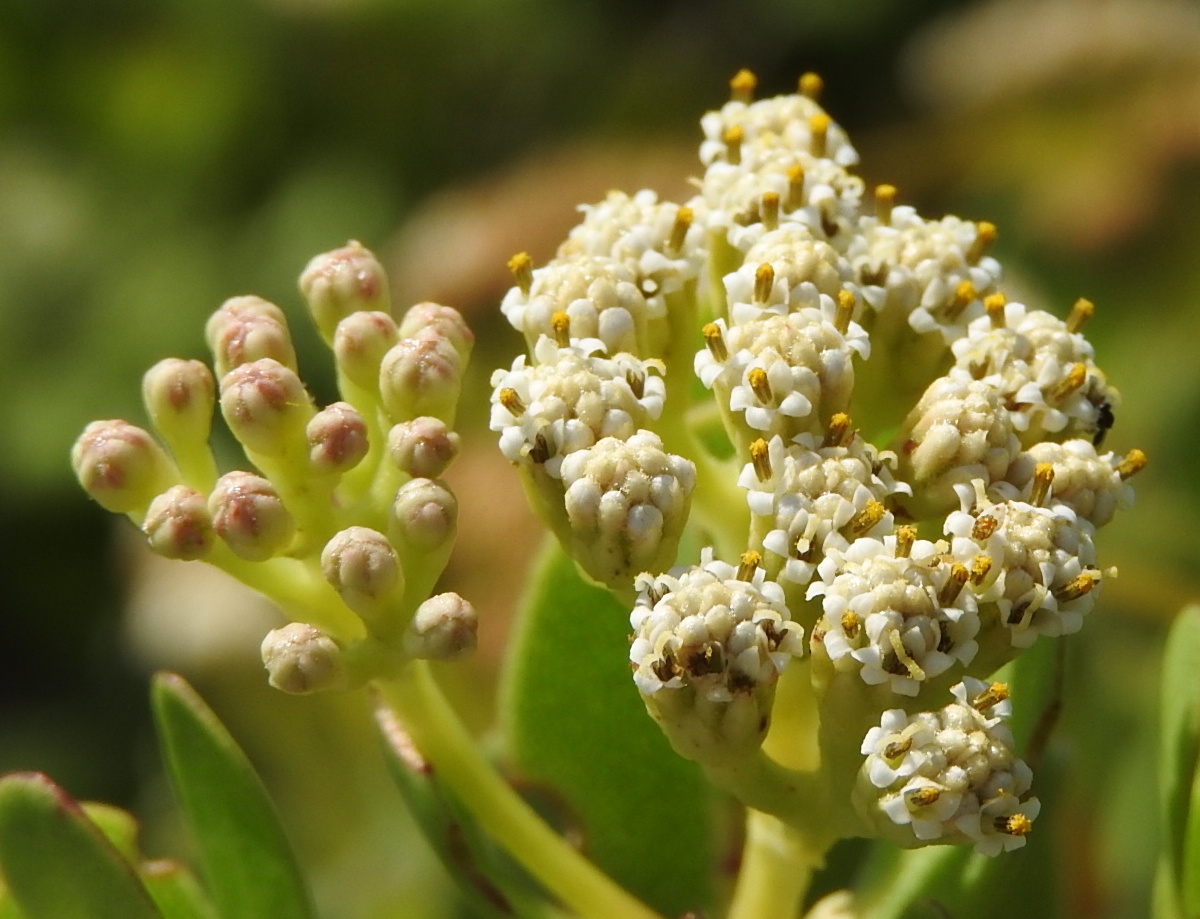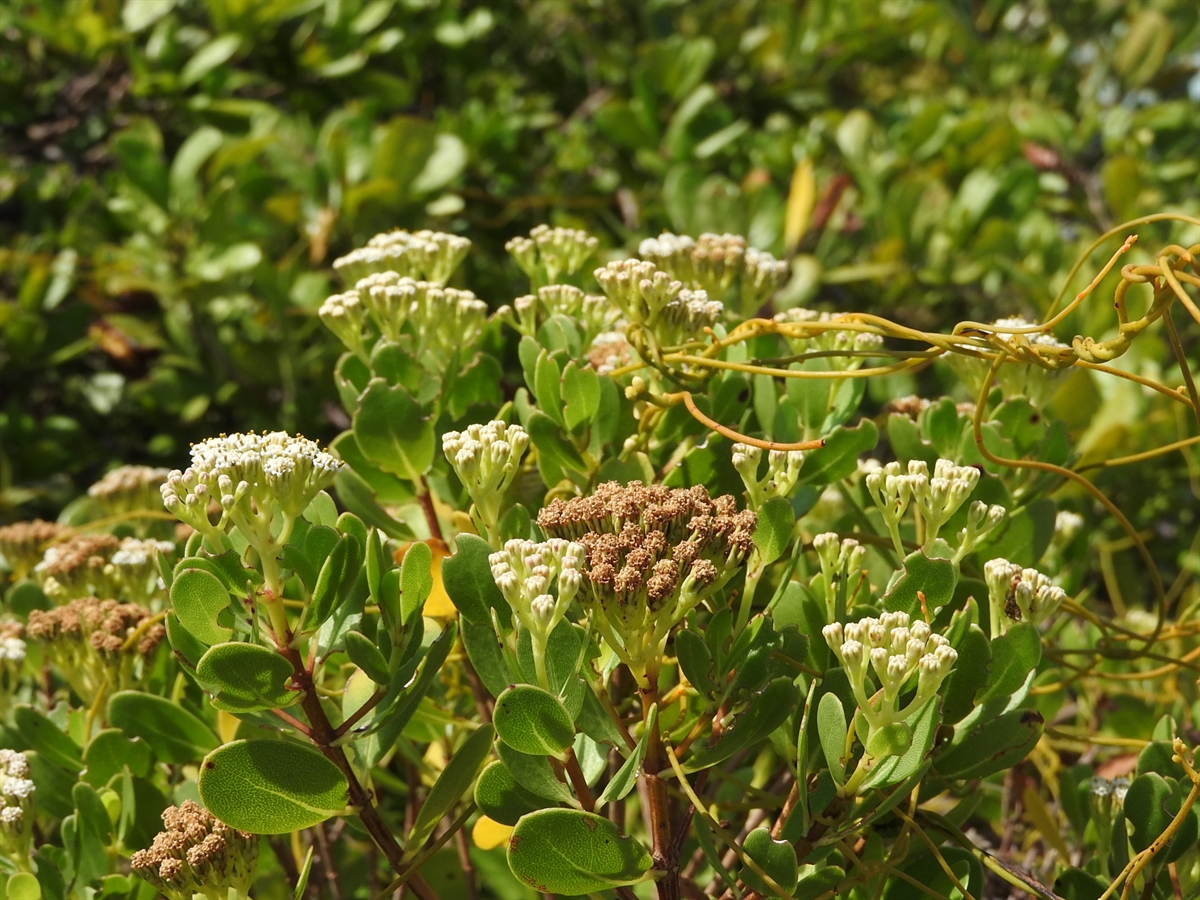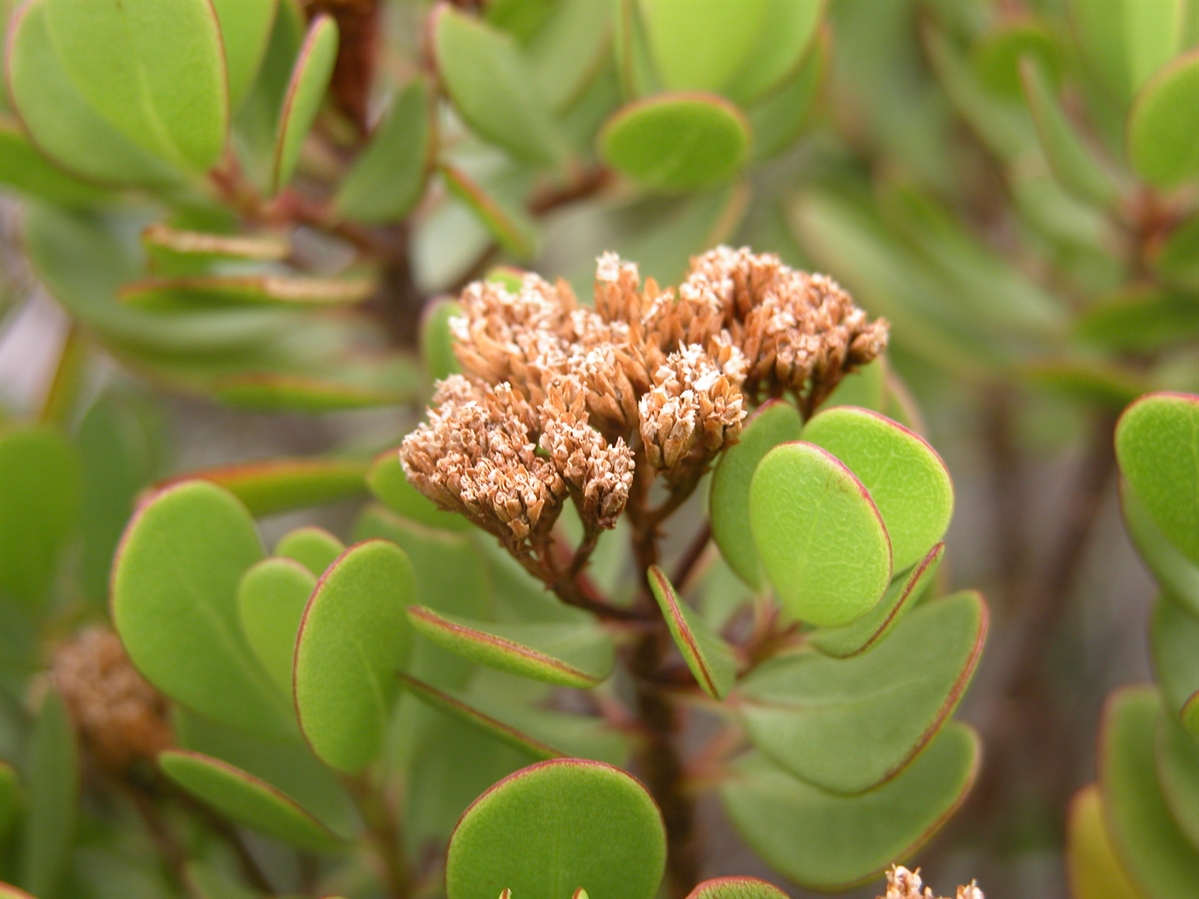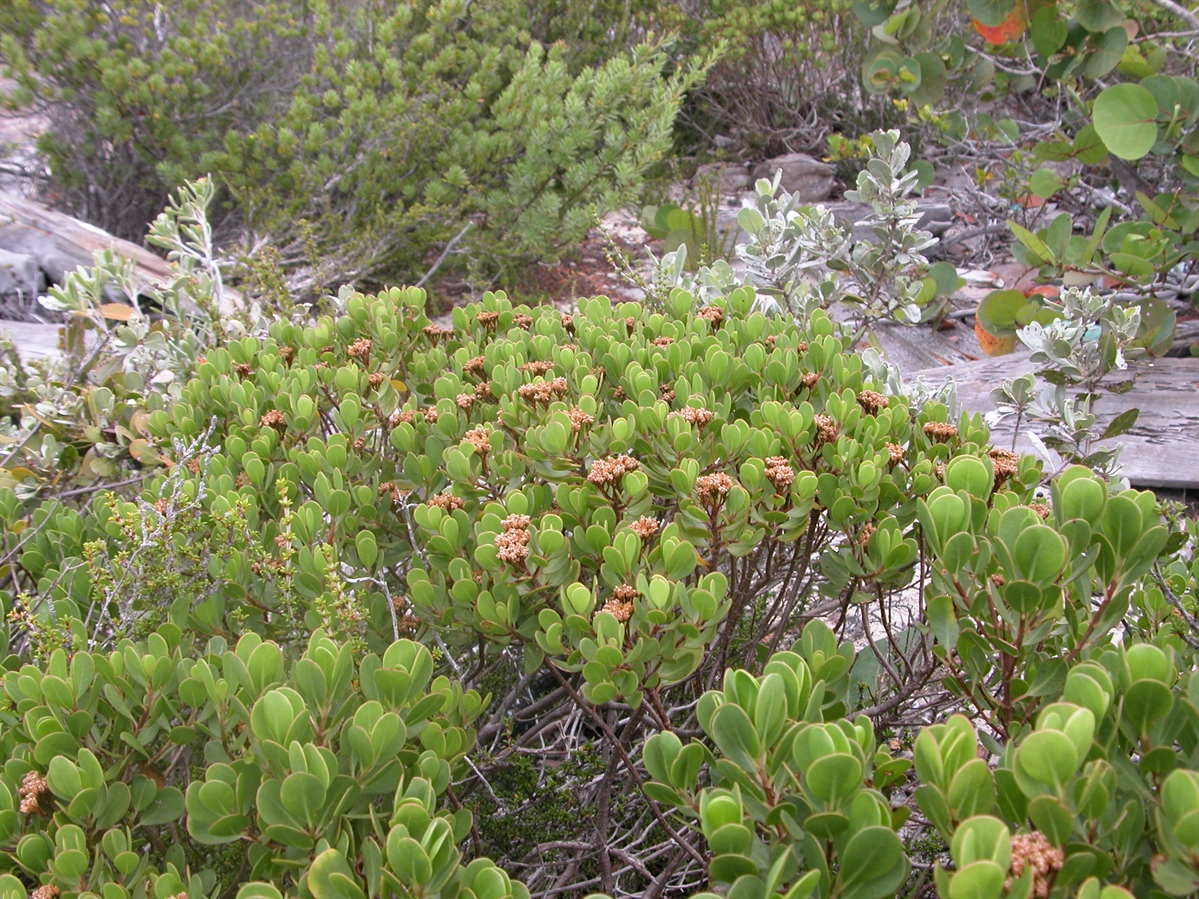Habit: Salmea petrobioides is a semi succulent perennial shrub to 2.5 meters in height. The semi succulent leaves are arranged oppositely, rounded – obovate, up to 12 cm in length and glabrous, with an entire margin, and often apiculate leaf apex.
The complete, perfect, actinomorphic flowers are arranged in heads. The heads are subtended by a series of involucral bracts. The calyx is modified as 2 projections or awns (pappus). Each flower is subtended by 3 bracts. There are 8-10 flowers per head. The flowers have a corolla with 5 fused, white to pinkish petals. There are 5 stamens fused at their base. In both types of flowers the ovary is inferior with a single locule but only the imperfect flowers have functional ovules. The fruit is an achene at maturity.
Habitat: Salmea petrobioides in coastal areas such as Dunes, Rocky Shores, and Palm Woodlands.
Distribution: Salmea petrobioides grows throughout the island groupings of the Lucayan Archipelago, Caribbean, and Florida.
Medicinal/Cultural/Economic usage: Salmea petrobioides is not known to be used medicinally in the Lucayan Archipelago.



